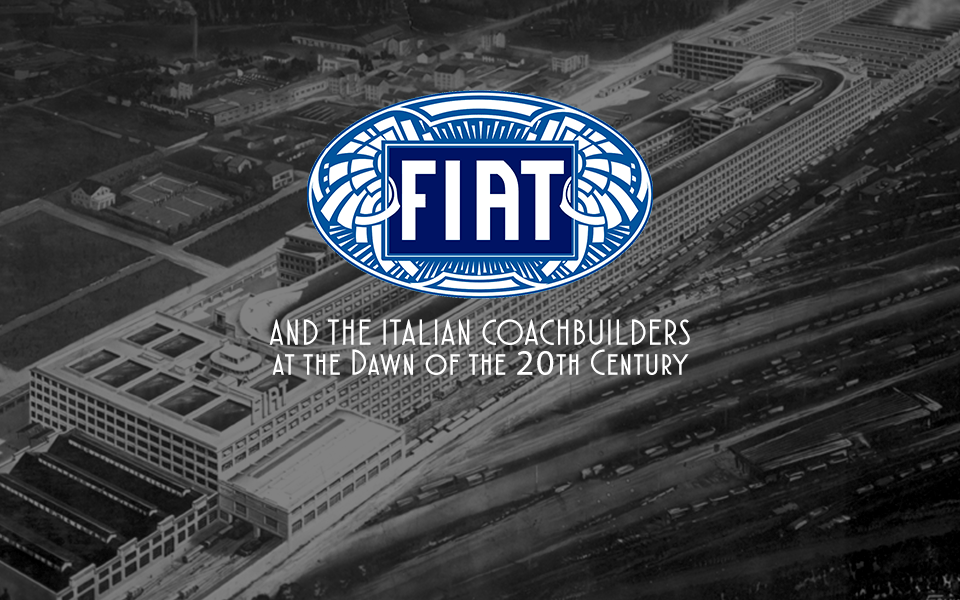
One of the subtle pleasures that the study of history offers is the discovery of the debatability of a common belief, of a consideration accepted supinely out of mental habit.
Italy witnessed the emergence of a wide variety of automotive companies, especially between Turin and Milan, at the beginning of the last century. However, over the following decades, these companies gradually disappeared, culminating in recent years with all surviving brands converging under a single entity: Fiat. This phenomenon has seldom been compared to another, equally significant but fundamentally different occurrence, namely the proliferation of automotive coachbuilders. Unlike the automotive companies, the coachbuilders did not experience a similar disappearance, but rather a gradual consolidation, with some even transforming their operations into robust industrial entities.
From Flourishing Diversity to Consolidated Excellence
As the onset of the First World War loomed, approximately fifty coachbuilders emerged in the bustling regions between Turin and Milan. Similarly, another fifty establishments emerged during the interwar period, followed by an additional twenty-five from the post-war era up to the 1960s. Today, only a handful of names remain, predominantly acquired by foreign funds or companies such as Italdesign, Pininfarina, Touring Superleggera, Zagato, and the new Ares Design from Modena, all of whom continue to champion the legacy of Italian design excellence.
What accounts for this discrepancy, particularly within the same timeframe and geographic area, namely the Turin region? One would logically assume that the same forces driving the emergence and subsequent decline of numerous automotive factories would also impact the birth and closure of many coachbuilders.
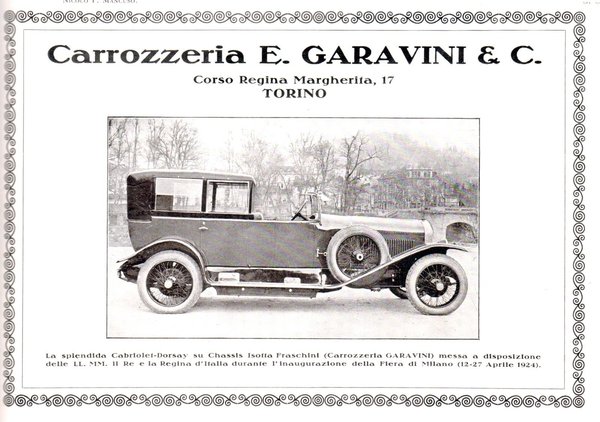
In the 1930s, as the aftershocks of the American economic crisis led to the downfall of illustrious automotive brands unable to compete with Fiat’s dominance, Garavini, a modest artisanal coachbuilder, unveiled the breathtaking Fiat 508 Cabriolet. This cabriolet by Garavini swiftly became emblematic of sportiness, elegance, charm, grace, and affordability. Carrozzeria Garavini’s craftsmanship extended beyond Fiat vehicles; they collaborated with Lancia, Alfa Romeo, Itala, Bugatti, Delahaye, Citroen, boasting clientele including the King of Belgium, Menelik, Emperor of Ethiopia, and even a Maharaja, for whom they crafted an Isotta Fraschini featuring an ivory steering wheel and a gold-plated engine.
Garavini was not alone; numerous other coachbuilders thrived during the golden age of Italian coachbuilding, from Stabilimenti Farina to Castagna, from Balbo to Touring, Allemano, Vignale, Zagato, Francis Lombardi, Fissore, Savio, Boneschi, Boano, and beyond.
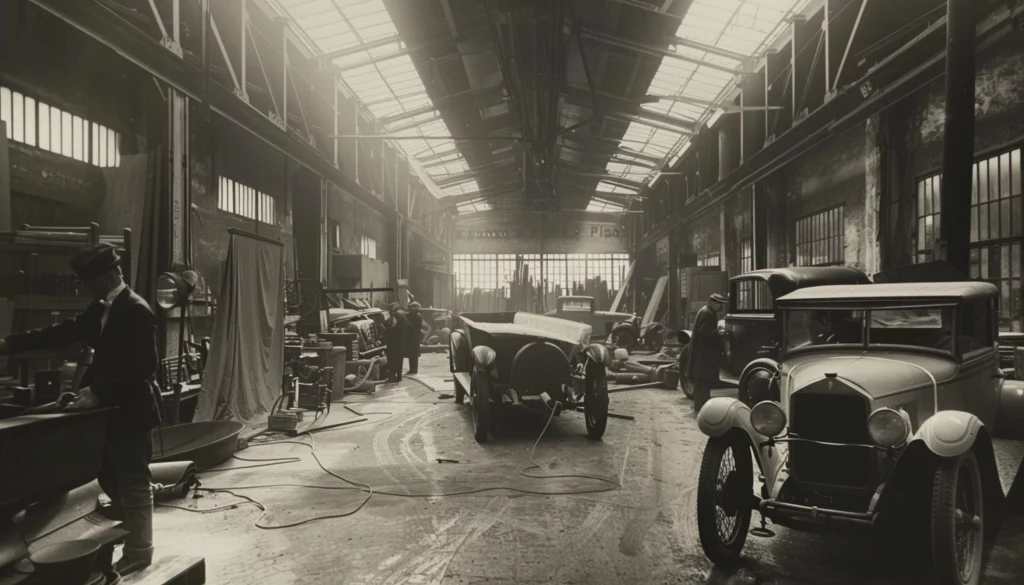
Fiat's Paradox: The Lifeline for Italian Coachbuilders
Only Italian coachbuilders seemed to flourish, while foreign counterparts – some renowned names like Labourdette, Saoutchik, Figoni and Falaschi, Chapron, Van den Plas, Mulliner, Fleetwood, Le Baron, Rollston, Graber – mostly faded away by the 1950s.
Hence, the explanation must lie within Italy itself, specifically with Fiat. Despite often being associated with the decline of numerous automotive manufacturers, Fiat paradoxically played a crucial role in the survival of many coachbuilders.
Towards the end of the 1930s, most car manufacturers ceased producing chassis, a vital component for coachbuilders, opting instead for monocoque construction. This shift significantly increased costs for coachbuilders, leading many to struggle.
However, Fiat continued to offer chassis, even when it became economically burdensome. This availability allowed Italian coachbuilders to remain operational. As the automotive industry moved towards monocoque designs, coachbuilders survived only where there was a partnership with a factory willing to supply mechanized platforms and support sales.
The importance of this partnership cannot be overstated. While competing automotive brands required independent sales networks, coachbuilders benefited from utilizing the factory’s sales channels. This unique dynamic turned what would have been a differentiation challenge in a competitive market into a unifying and economically beneficial relationship between factory and coachbuilder.
Evolution of Italian Coachbuilding: Creativity in the Face of Industrialization
Of course, nothing unfolds arbitrarily. At the core lies the ingenious inventiveness and creativity of Italian coachbuilders, alongside distinct historical and economic conditions. In the early automotive era, Italy, though not a frontrunner, kept stride with other European automobile-producing nations like France, Germany, and Great Britain. However, as automobiles transitioned from elite novelties to industrial products, Italy lagged behind. Its market resembled that of a less affluent nation, unprepared for such costly commodities. Meanwhile, other countries, including the United States, recognized the vast commercial potential of motor vehicles and geared up to offer comprehensive products.
In this shift, the aesthetic intricacies of automobile design took a backseat to factors like reliability, affordability, and mass production. The skilled artisan coachbuilder, proficient in various crafts like saddle-making, bodywork, painting, and upholstery, was gradually supplanted by efficient machinery capable of mass-producing car parts in a fraction of the time. While industrialization adopted a pace akin to Charlie Chaplin’s “Modern Times,” automobiles became commonplace commodities.
In contrast, Italy retained a relatively underdeveloped motorization landscape, which, while presenting challenges, also served to preserve the craft of coachbuilding. Despite Italy’s slower adoption of automobiles on a mass scale, its coachbuilders continued to cater to discerning clients with their exquisite and refined products, largely undeterred by the changing industrial landscape.
The Fiat Carrozzerie Speciali Department
Within the rich collaboration between Fiat and coachbuilders lies a lesser-known period spanning from 1910 to 1931. During this time, a “Fiat Bodywork Department” (Carrozzerie Speciali) operated from its headquarters on Via Madama Cristina in Turin. This department housed sections for body framing, metalworking, finishing, and notably produced elegant and sophisticated body styles with grandiose names of foreign origin: Run-about Courreuse, Gun boats, Double Phaeton Embouti, Landaulet Limousine, Coupé Berlina, Char à Bancs. Adorning the establishment’s façade was the name “Carrozzeria Italiana J. Rothschild & Fils” – a French coachbuilder that had established a presence in Turin.
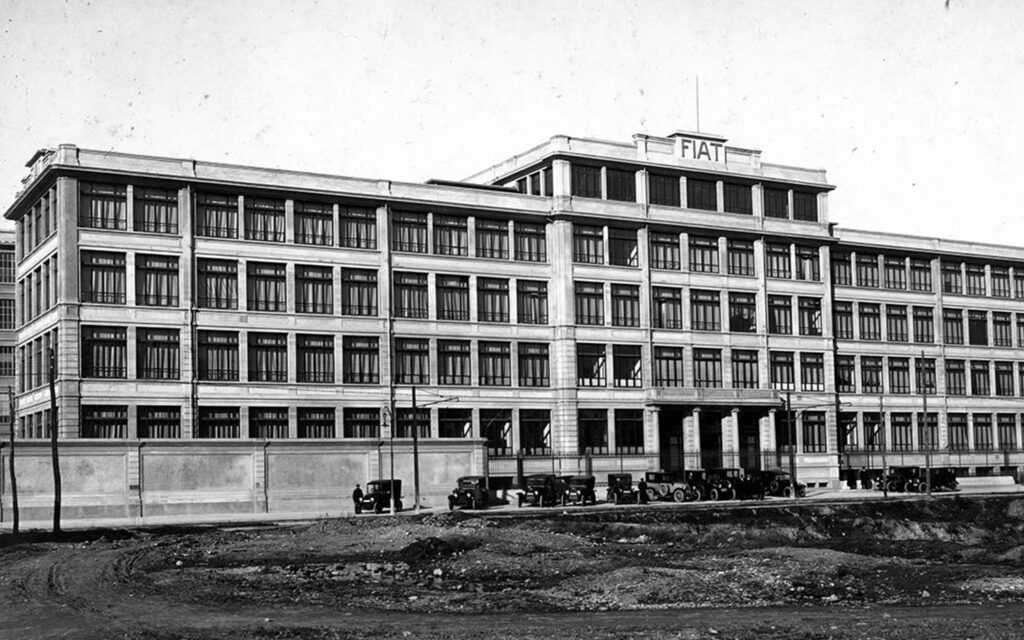
However, this department’s history merely represents a temporary yet illustrious phase in the ongoing dialogue between Fiat and coachbuilders since the company’s inception. Until 1903, Fiat primarily relied on Carrozzeria Alessio, a licensee of the Weymar patent, for its bodywork needs.
Carrozzeria Alessio
Marcello Alessio embarked on his career as a laborer at Locati & Torretta, quickly surpassing his mentor in skill and knowledge. Recognizing the burgeoning potential of the automotive market, he ventured out on his own, establishing a small coachworks factory at Via Dell’Orto Botanico 19 (now Via Cesare Lombroso). With immense passion and innovative construction methods, Alessio swiftly rose to prominence, attracting prestigious clientele and earning a reputation as one of Turin’s foremost coachbuilders.
His renown extended beyond serving wealthy private customers, as several new car manufacturers sought his expertise in crafting coachworks. Alessio collaborated with Michele Lanza, producing the Welleyes for Ceirano and crafting bodies for early Fiat models. Additionally, he worked on chassis from various other brands, including Darracq, De Dion-Bouton, Panhard, Mors, and Renault, among others.
Alessio’s success led him to represent French Kriéger and Rochet-Schneider cars, as well as German Mercedes, importing bare chassis and adding his bespoke coach-built bodies. This venture created tension with Fiat, prompting the automaker to shift its body orders to G. Lanza.
Navigating Turbulence: Fiat, Carrozzeria Alessio, and the Carrozzerie Speciali Department
The dynamic between Fiat and Carrozzeria Alessio wasn’t devoid of hurdles. At a pivotal Board of Directors meeting on January 17, plans for the establishment of Carrozzeria Industriale G. Lanza e C. were unveiled by Agnelli. This venture aimed at manufacturing automobile bodies, with Fiat proposed as a key participant to expedite bodywork tasks.
The proposal was met with mixed reactions among board members, with some interpreting it as a retaliatory measure against Alessio’s actions. In response, Agnelli passionately defended Fiat’s stance, highlighting instances where Alessio had diverted potential clients away from Fiat. He argued vehemently against facilitating competitors’ profitability, emphasizing the need to safeguard Fiat’s interests amidst a competitive market landscape.
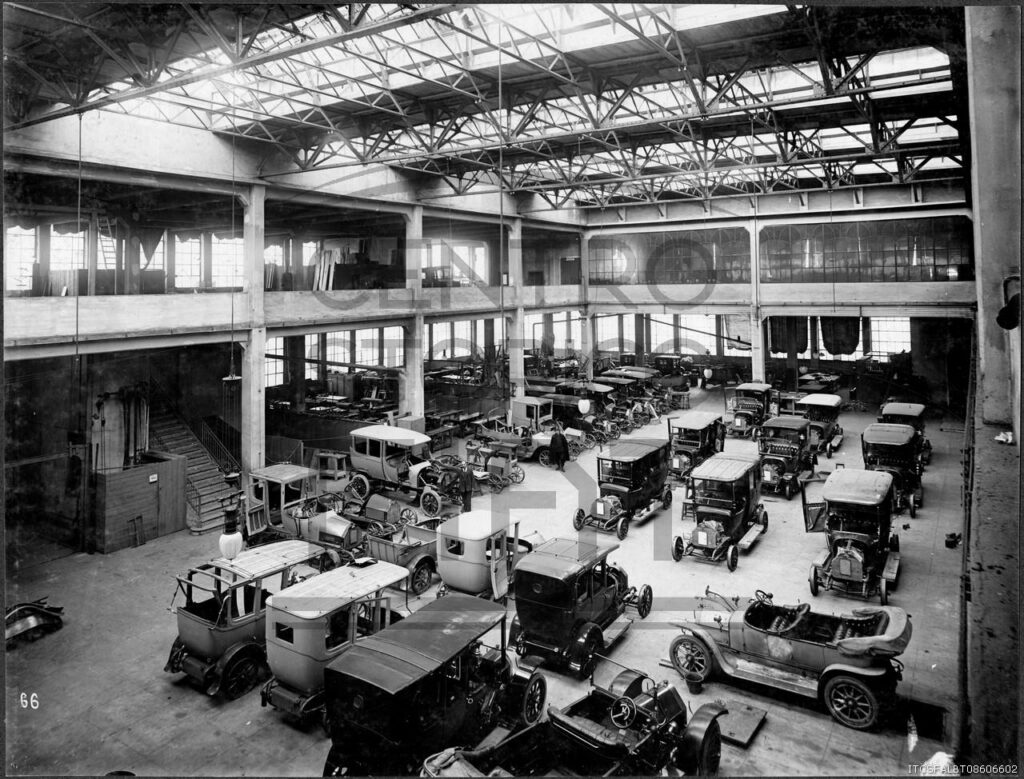
Despite initial reservations, Fiat’s involvement in Carrozzeria Industriale was solidified, signifying a strategic move to streamline production processes and assert Fiat’s influence in the automobile industry. However, managing this partnership presented its own set of challenges.
Within a year, signs of strain began to emerge. Racca, tasked with supervising Carrozzeria Industriale, resigned from his position, citing issues regarding the autonomy of the managerial role. This development underscored the complexities inherent in navigating partnerships within the automotive sector, where competition and collaboration often intertwine.
In the wake of Racca’s departure, Carrozzeria Rothschild & Fils emerged as a significant player, acquiring Lanza’s operations and establishing a new branch at Via Madama Cristina 147. This transition marked a pivotal moment in the evolving landscape of Turin’s automotive industry.
By 1910, Fiat made a strategic decision to absorb Rothschild, effectively integrating its operations and resources. Consequently, Fiat’s bodywork department underwent a rapid transformation, emerging as a fully functional entity capable of catering to diverse demands.
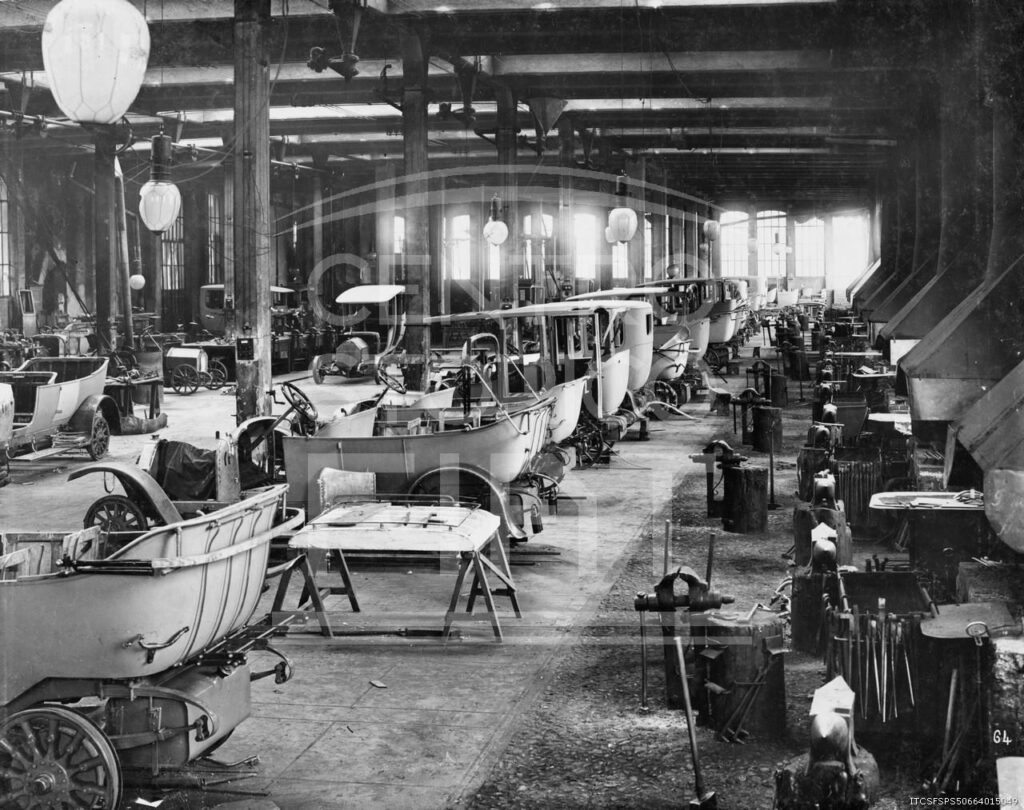
Initially serving as Fiat’s primary client, the department gradually expanded its clientele to include external firms such as Lancia. This strategic pivot underscored Fiat’s commitment to innovation and adaptability in navigating the evolving automotive landscape.
Despite undergoing various transformations over the years, the bodywork department remained a cornerstone of Fiat’s operations. Its legacy endured through the establishment of the Carrozzerie del Lingotto in the late 1940s, symbolizing Fiat’s enduring legacy and influence in the automotive realm.
Conclusion
In conclusion, thus ended an important chapter in Fiat’s history. However, as we have seen, the productive and diverse relationship between Fiat and numerous coachbuilders continued to thrive, delighting our eyes and celebrating Italian creativity. This collaboration persisted over time, evoking admiration and showcasing the Italian flair for design. Fiat’s adaptability and willingness to collaborate helped keep alive the legacy of Italian coachbuilders, fostering an ongoing blossoming of automotive design. This underscores the crucial role that creativity and innovation play in the Italian automotive landscape.


